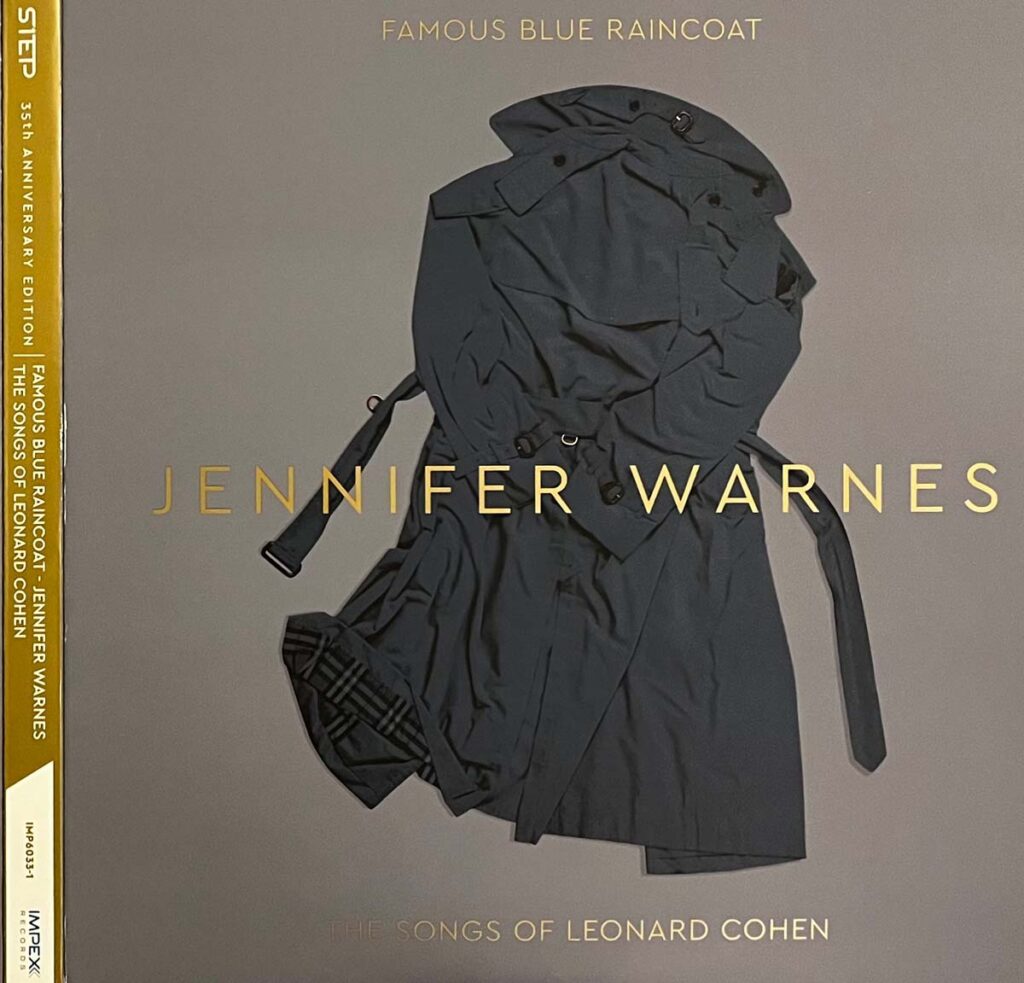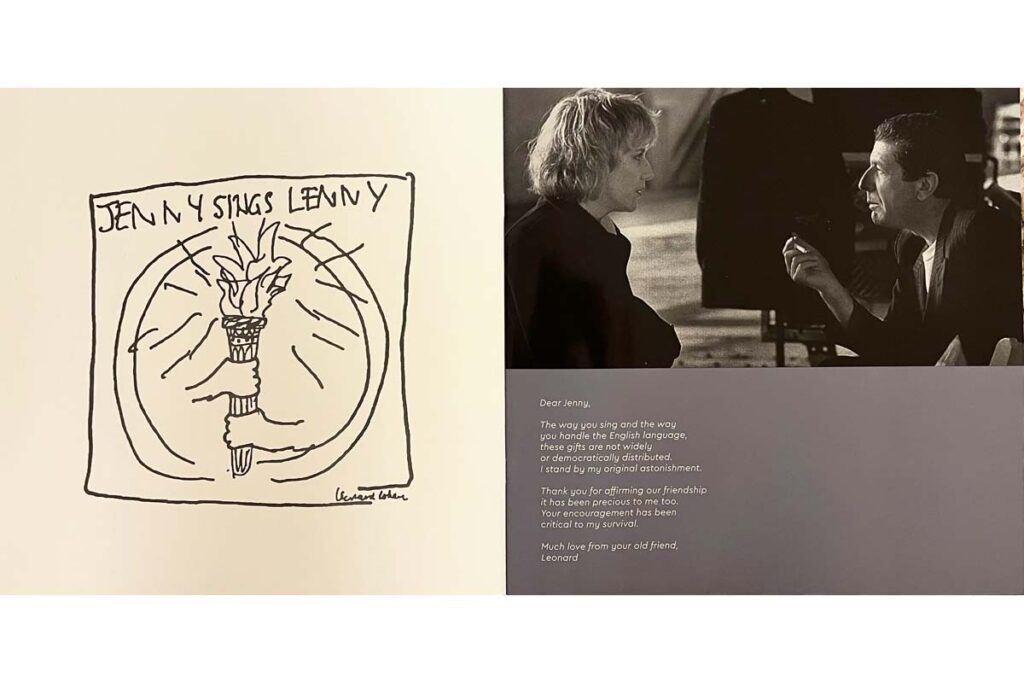With the release of the final edition of Jennifer Warnes’ Famous Blue Raincoat, Impex Records has gone all-out on the material quality – both haptically and musically.
Some albums only become staples thanks to audiophile circles, as at the time of their creation, they only enjoyed modest success. Perhaps the best-known and most controversial album in this respect is certainly Jennifer Warnes’ Famous Blue Raincoat, a tribute to Leonard Cohen. The American singer’s sixth studio album reached number 72 in the US charts and number 33 in the UK charts in 1987. The songs on the album span much of Cohen’s career, from his 1969 album Songs From A Room to his then unreleased album I’m Your Man. Warnes’ critically acclaimed artistic approach is characterized by a style modeled after Cohen’s dry vocal technique while at the same time refraining from outright imitating him, but rather adding a flavor of her own. Of course, there were also those who didn’t take kindly to this album. Peter Gerstenzanga from The Village Voice criticized that Cohen’s original arrangements were more suitable than Warnes’ “slick stuff”. In addition, Warnes’ melismas sometimes sounded unnecessarily cloying. The two contradictory reception sides probably also explain the only mediocre commercial success of the album, which was either admired or rejected.
35 years give us enough of a distance to take a completely different look at the album today to better understand the positions, especially if you take a historical look at the sound and production preferences of the 1980s, under which the album leaves an interesting and ambivalent impression at the same time. On the one hand, some of the songs have that typical 1980s sound: snare drum and toms as well as keyboards and saxophone are given a proper reverb tail, the upper midrange is beautifully vibrant and the overall sound is always a touch too harsh. On the other hand, there are conservative and timeless arrangements, mostly of a balladic nature, and the highlight is the a cappella piece “A Singer Must Die”, all produced in a warmer seventies sound. On the second listen at the latest, you realize that the album was recorded in various studios in Los Angeles in 1986.
But where does the success in audiophile circles come from? One may be skeptical of the production techniques of the eighties for many reasons, but the album is damn well done. Songs like “First We Take Manhattan” or “Bird On A Wire” present the above-mentioned sound characteristics of the time as if under a magnifying glass. The album is recorded so transparently throughout that every reverberation can be traced down to the tenth of a second, every snare hit presses explosively on the diaphragm and Warnes’ voice emerges seamlessly from the instrumental background. A classic arrangement such as “Song Of Bernadette”, on the other hand, with its deep piano chords and broad but pointed bass parts, leaves a nerdy sounding scent-mark even on the normal first edition. As you could be certain that not all the stops have been pulled on the first edition, which was ultimately released for the mainstream in 1986, it was tempting for labels such as Impex Records to tease out the full sonic potential of this recording in subsequent years, which brings us to our current reissue.
Impex took the 35th anniversary of the album as an opportunity to think about an ultimate reissue. Label owner Abey Fonn wanted to give the album a final edit, which would indeed be its last: After Bernie Grundman made the lacquer cut, the album’s master tapes went back into Jennifer Warnes’ personal archive forever. The relationship of trust between Impex producer Fonn and Jenifer Warnes is based on numerous releases in recent years, including the remaster of The Well and The Hunter and her last album Another Time, Another Place. This one-step LP box is based on the first generation analog mixdown master from the original digital recording and was processed by Bernie Grundman on BG Mastering’s tube cutting machine. To understand the exact cost of this production of three 45-rpm LPs, let’s consider the material cost of a one-step LP: In regular LP productions, the lacquer cut is converted into an initial “father stamp” with an inverted groove structure. A “mother stamp” with the correct groove structure is then created from this. Only in the next step is the actual press stamp produced, which is now used for the production of the LPs. In this way, almost any number of LPs can be pressed with one lacquer cut. In the one-step process, these steps are omitted and the lacquer cut is converted directly into the pressing die. The disadvantage is that only a few hundred LPs can be pressed with each lacquer cut. This means that if more than a few hundred LPs are to be produced, several lacquer cuts are required. For the final pressing of our audiophile classic, there is also the fact that numerous test pressings were made in a meticulous process to bring out even the finest details before the final result was then pressed on VR-900 super vinyl at RTI.
All in all, the result is more than impressive: A tremendous battle of material with three LPs, an extensive booklet and a double foldout cover in a sturdy box – and that’s just the externals. In terms of sound, we are plunged into the depths of the recording as if through a magnifying glass, swept along by a stupendous dynamic and touched by a warm emotionality in the acoustic tracks. This is as close to the music as you can get; this is definitely “The Final Cut”.
Jennifer Warnes
Famous Blue Raincoat
Label: Impex Records/One Step Vinyl
Format: LP-Box (3 LPs Vinyl 180 g/45 rpm)




